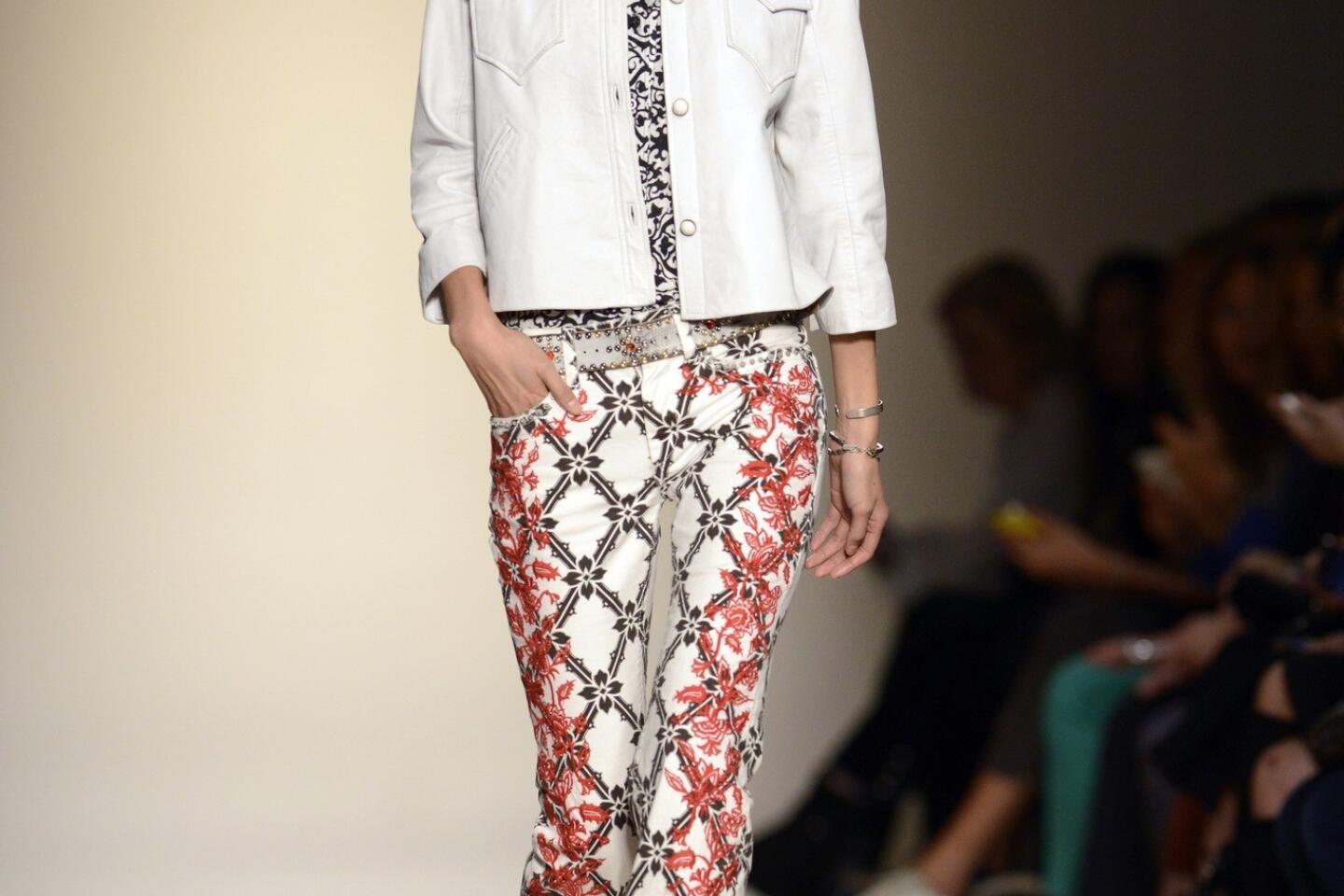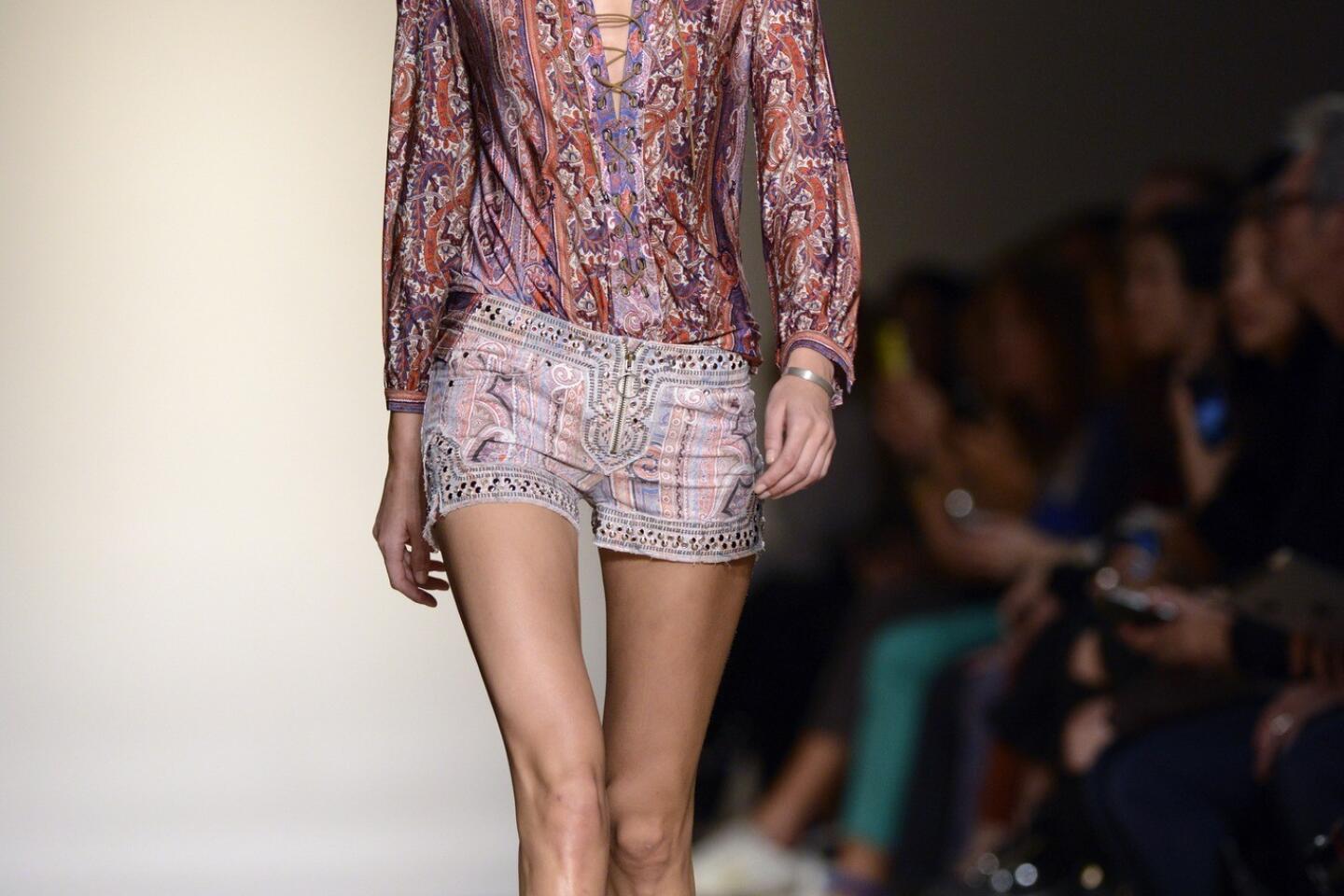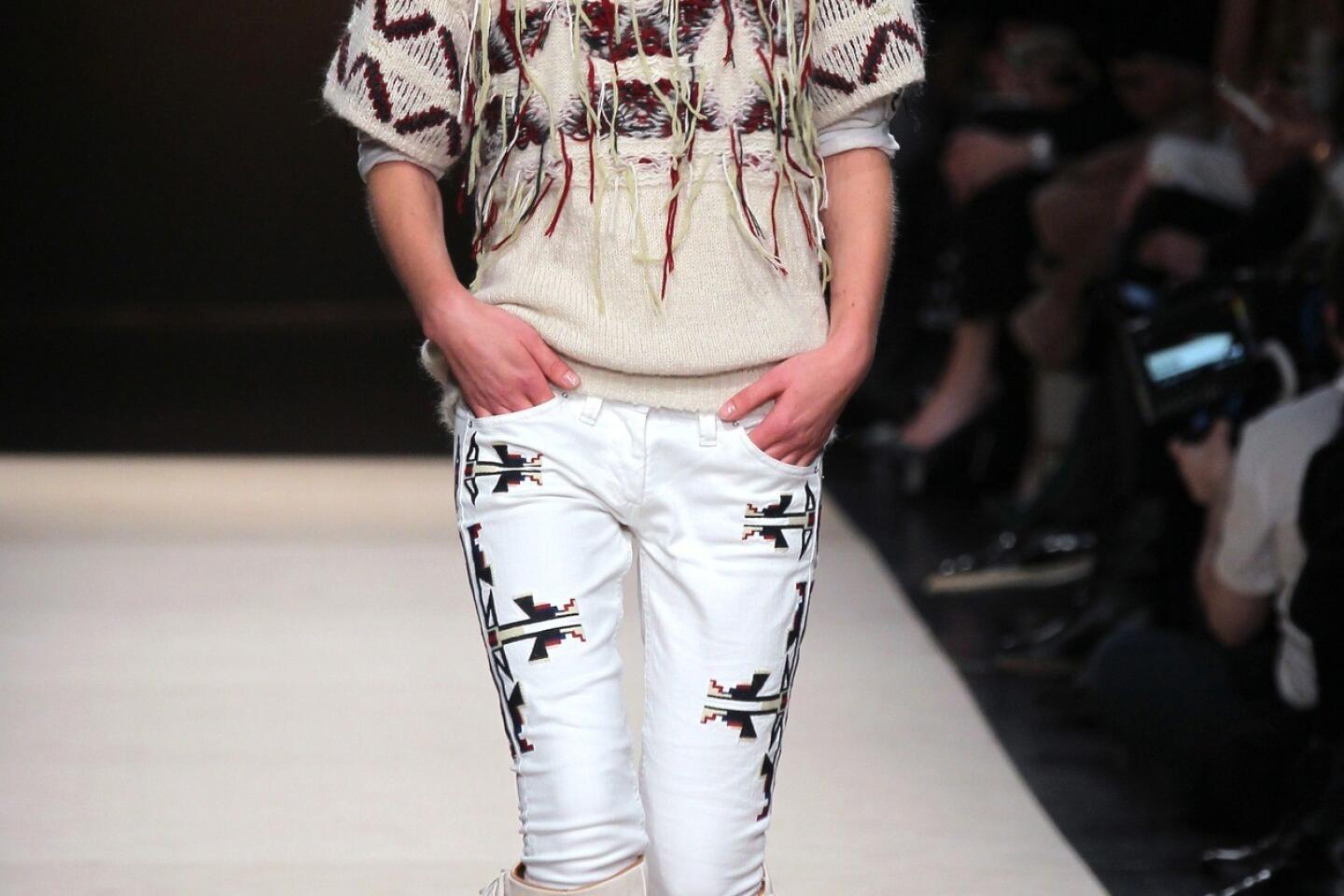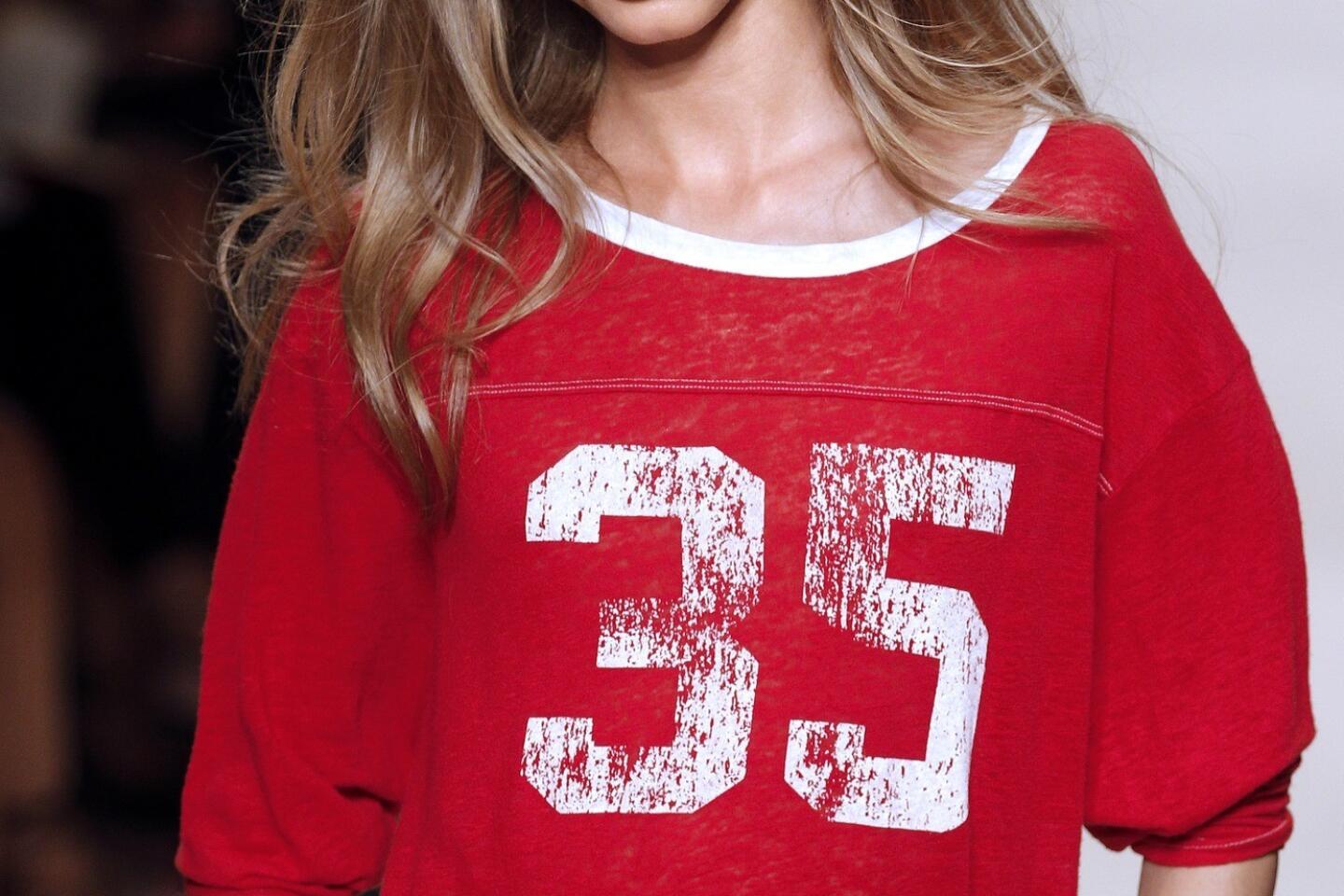L.A. flair, the French way
Paris-based designer Isabel Marant rhapsodizes about Los Angeles the way most people rhapsodize about her hometown.
âIn a minute you can be at the sea or in Joshua Tree,â she says. âThere are so many things to do in nature. But I love the architecture too. Thereâs everything I love â the sun and the light. I have always thought this is a place I could live.â
Marant, 45, launched her boho-cool label with jewelry in 1994. Soon after, she expanded into clothing. Over the years she has made quite a study of the L.A. look but did not set foot in the City of Angels until 2010.
When Marant first came here, it was by accident. She was waylaid in New York by a volcanic eruption in Iceland, and decided to go West for a side trip. Luckily she had some fashionable friends to play tour guide: Los Angeles designers Sunjoo Moon (Of Two Minds) and Nathalie Saphier, both of whom have consulted for her brand. While she was here, she took in the vintage work wear and Americana at stores such as Mister Freedom, immersed herself in the fringy rock ânâ roll vibe of Laurel Canyon, and observed the graphic, surf-and-skate sportswear in Venice Beach.
âOf course it influences me,â the designer says of Los Angeles. âIn many of my past collections, I have been using the vocabulary of the California way of dressing.â
And Los Angeles has returned the compliment.
Her suede âDickerâ cowboy booties, Western snap-front shirts, Navajo-inspired skinny jeans, fringy leather jackets and craftsy, chunky sweaters are the everyday uniform of Hollywood âItâ girls such as Kate Bosworth, Jessica Biel, Emma Roberts and Diane Kruger. (âIâm so pleased, how could I not be?â Marant says of the celebrity love.)
Marantâs brand has such a cultish following thereâs even a blog devoted to it â Marantphiles.com, which was started by a fan.
Success, of course, can inspire imitation. In the last decade, Marantâs disheveled Franco-American glam has been a strong influence not only on the streets but in stores such as Zara and Steve Madden, which routinely interpret the look.
Launched two years ago, her bestselling $665 high-top âBettyâ sneakers with a concealed wedge heel sparked thousands of imitators. (âCopying is proof of being successful, but I did work a long time on the design â eight months â because it was quite tricky to put a platform inside a shoe. And Iâm sorry it has become something so common. Iâm still quite angry.â)
Nonetheless, business is booming. In 2003, Marant, who is married to handbag designer Jerome Dreyfuss, launched her lower-priced Ătoile line, and she now has 13 stores worldwide.
While she has yet to purchase a home in Los Angeles, she has opened a store here on Melrose Place.
âThe name of the street is a dream,â Marant says. âIt sounds like something out of a movie. Itâs a tiny street you can walk on, and I love the market on Sunday. Our little building looks like an artistâs studio. Itâs not so much like a shop, itâs like an L.A. house. And I hope people will have the feeling they are invited to my house.â
A self-described rebel growing up in the Neuilly-sur-Seine suburb of Paris, Marant was surrounded by fashion and art from her parentsâ travels to Africa, India and Mexico. Her German mother, Christa Fiedler, was an iconic 1960s-era model and later the director of the Elite modeling agency, and her French father, Claude Marant, worked in advertising. Her stepmother, Betty Marant, was from the Caribbean and also was a style influence.
Marant was a tomboy. âI hated everything that was feminine,â she says. âI never thought about being a designer, but I did have precise ideas about what I wanted to wear. I was always making crazy looks out of old garments that belonged to my mother and father, wearing a paisley print robe from Bergdorf Goodman, or an oversized V-neck cashmere sweater as a dress, which looked quite great and grungy.â
For spring, she was inspired by Western wear, specifically a book called âRodeo Girlsâ that she has treasured since the age of 14, as well as by Hawaiiana and Elvis Presley in his flashy, white-jumpsuit days. Looks on the runway included Hawaiian print, one-shoulder tops, pareo skirts, printed and studded jeans, blousey paisley tops and dresses and rhinestone-studded sandals and bags.
âAt first Iâm always thinking, âWhatâs the new silhouette?â Thatâs more of a philosophical question. Then I start to pick up images I like and put them on the [inspiration] board. I was thinking about the meaning of summer, and its ease, the way you can just grab a piece of fabric and wrap it around your hips and look good.â
âI was looking at 1940s images of Hawaiian women in pareos, which were very inspiring. But it was too sweet, so I started thinking about white leather and studs, which of course means Elvis. And I remembered his movies in Hawaii. Itâs like a puzzle and suddenly everything fits.â
Marant has no qualms about being a Parisian designer who is known and revered mostly for the more typically American wardrobe of jeans, T-shirts and sneakers.
â[Jeans and T-shirts] are the 21st century uniform. If you are at any red light anywhere in the world, at least 70% of people will be wearing that. Itâs easy and comfortable and itâs still fashion.â
So whatâs next for Marant? Not more stores, at least not now, because she wants to keep the business from growing too big, too fast. âI want to concentrate on positioning the collection,â she says. âAnd Iâm trying to think about how to show my collections in a more confidential way. There are too many images of fashion, and they are out there too early in the season. By the time the clothing is in the shop, you donât want it anymore.â
âIâm a great dreamer,â Marant says, âBut I also think that less is more.â











